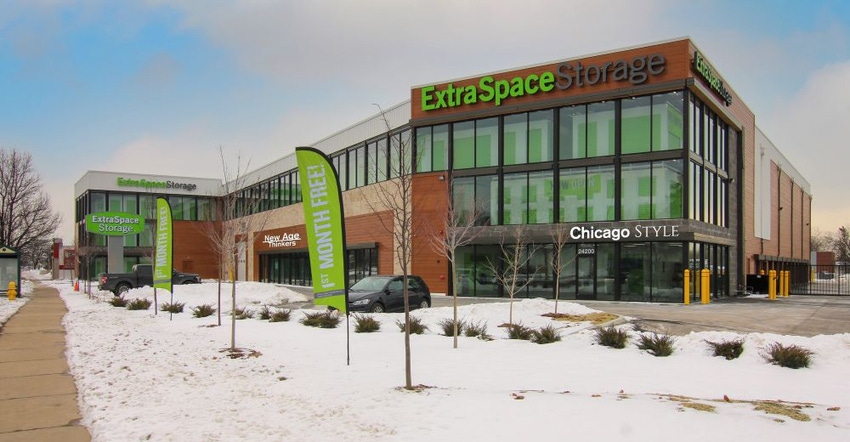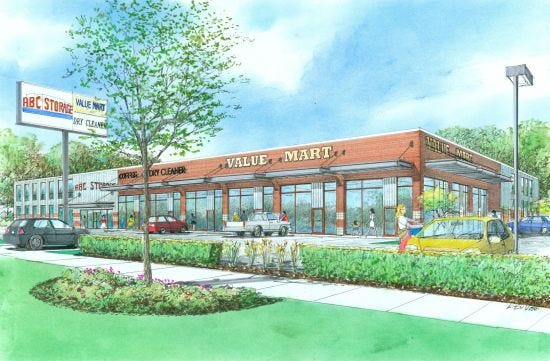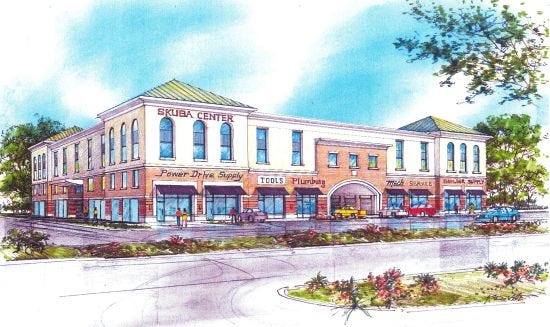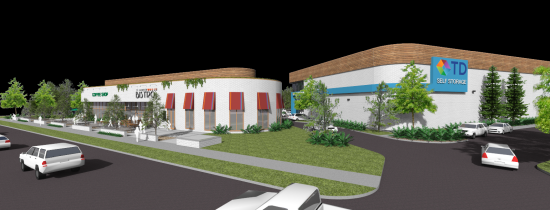Using a Mixed-Use Development Strategy to Get Approval for Your Self-Storage Project
If you’re looking to build a self-storage facility in a zoning district in which such structures aren’t usually permitted, a mixed-use project may be a way to gain entry. Here’s an overview of what to expect from municipalities and some strategies to help you win approval.

If you’re looking to develop self-storage today, the good news is more cities are beginning to soften to the idea of allowing it in retail and commercial zones. The bad news is some haven’t yet begun to consider allowing it outside of light-industrial areas. A mixed-use approach can sometimes be the solution that gets you where you want to be.
Even municipalities that are behind the times can be persuaded by the reality that big-box retail stores and midrise offices are struggling. A cultural shift to more online shopping and remote working is creating holes in the fabric of many prized and vibrant community districts, which no one wants to see. This is one reason why zoning is fluid, even if it’s painfully slow to adapt. Self-storage will benefit from these trends as cities are forced to re-evaluate their planning policies. It’ll take time and effort, but a mixed-use proposal may be your best option to capitalize on current market conditions.
For example, let’s say you’d like to build along a major retail corridor. The only way to capture the required zoning relief may be to provide small retail storefronts along the street within a multi-story building. Perhaps you’re converting a vacant big-box space in a strip mall, and approval is contingent on preserving a series of small retail storefronts facing the parking lot.
That said, mixed-use development isn’t suitable for every self-storage building site. In fact, the only time it makes sense to consider complicating your venture with additional business tenants is when you need them for zoning approval. It can then be a useful strategy to gain access to districts that prohibit self-storage on the surface but have a narrow or uncharted path for allowing it as a use.
Design for Success
To gain access to “prohibited but potential” districts, you’ll need to present examples of self-storage facilities that happily co-exist in similar areas elsewhere in the country. You’ll also need to design your project to complement the aesthetics of the immediate surrounding community as opposed to presenting a ubiquitous warehouse with a splash of door-displaying glass. With some liberated towns, a good custom design alone may get you across the finish line. However, it’s more likely you’ll be required to integrate retail or personal-service storefronts into your project.

ABC Storage in Centerline, Mich.
The Zoning Game
Every city will wrangle with and litigate your proposed concept differently. Some may actually amend the zoning code to embrace your self-storage project, while others will offer different avenues to thread the approval needle. Solutions might include a planned-unit development, conditional zoning, use variance or even special land-use permits.
These are all worth exploring even though they’ll add upfront legal and design fees as well as months to the schedule. Being in the right location is worth it, especially if you’re the first one there. But sometimes there’s simply no route to an approval in a prohibited zone, even with a mixed-use strategy.

Centerline Storage in Plant City, Fla.
Building Codes
Building-code requirements for mixed-use developments will vary by project, but since the additional use should always be a simple commercial, ground-level space with an independent entry, HVAC system and bathroom, the implications are minor. In many cases, the additional storefront is nothing more than 1,500 square feet of speculative shell space designated for retail.
A secondary strategy, which has no building-code implications, is to incorporate a simple out-lot along the right of way. This could be a pad for a franchise restaurant or drive-through coffee shop that’ll de-emphasize the self-storage building in the rear.
Both strategies should consider the fact that the primary use of self-storage needs to be visible and recognizable from the street. In difficult districts, the amount of visibility and signage you get will be a matter of contention, and you’ll have to fight for every inch the city will allow.
Use Considerations
Traditionally, the go-to tenant for a mixed-use project with self-storage has been a truck rental enterprise due to the complementary nature of the businesses. This isn’t acceptable in the scenarios described above because of a lack of perceived benefit to a retail district. Keep in mind, though, that a mixed-use proposal can help you gain access to other district types such as office, multi-family and general commercial.

TD Self-Storage in Charleston, S.C.
Tenant selection should be based more on complementing the zoning district you wish to enter than on finding something that’s a natural fit with self-storage. Here are some use considerations:
Office: Consider a small, co-working space.
Multi-family: If you dare to enter a multi-family area, then personal services, crossfit and small grab-and-go cafes are best.
Light industrial: Units targeted at car enthusiasts are becoming popular and range from a simple garage to a fully furnished tinker shop with a kitchenette, TV and bathroom.
Other: Extreme cases could include a ground-level private parking lot under a multi-level storage structure, or even a banquet facility with rooftop dining on the top of the facility.
One intuitive tactic is to use the self-storage sales office and merchandise area as one of the retail storefronts, side by side with any additional tenants. Entry to storage units would be within the office to accommodate tours.
Though the financial benefit of retail shell space isn’t always a home run, this side-by-side strategy offers tremendous benefit, creating a continuous flow of customers to the other businesses. Visitors will wander into your trendy sales office out of curiosity and become prospects you can turn into storage renters. With that in mind, it’s smart to consider high-volume businesses for any accessory uses as opposed to professional services, insurance offices or boutiques.

TD Self-Storage in Greenville, S.C.
A Unique Approach
Unfortunately, there are no cookie-cutter or franchise standards for mixed-use self-storage projects. Most endeavors will be one-of-a-kind because the addition of street-level commercial tenants is done to ensure the physical and cultural continuity unique to the surrounding buildings, activities and businesses. When done correctly, mixed-use is a win-win for the developer as well as the community.
Peter Stuhlreyer is chief architect for Designhaus LLC, which provides professional architectural services as well as interior and landscape design to self-storage and other business sectors. A graduate of the University of Cincinnati College of Design, Architecture, Art and Planning, Peter has worked on projects for companies including The Bank of Tokyo, Bayer Pharmaceuticals, Rupert Murdoch's News Corp and the World Trade Center. He’s been the architect for more than $250 million worth of commercial and residential construction. For more information, call 248.601.4422; email [email protected].
About the Author(s)
You May Also Like





